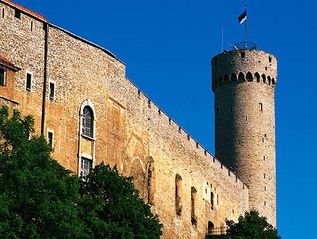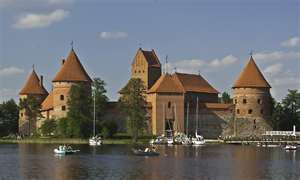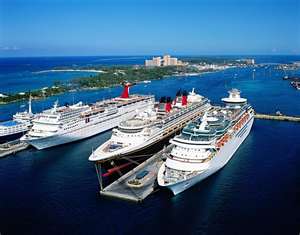Highlights:
- I transferred from FSI to OIG for a two year tour as a Management Inspector.. The assignment gave me an opportunity to travel throughout the world conducting inspections of our embassy bilateral relations, with a team of Foreign Service and Civil Service experts in Consular Affairs, Political/Economic, Information Technology, Management and Security operations headed up by an Ambassador.
- We had a lot of work to do before going out on an inspection in the "survey phase" besides interviewing staff of the regional and functional bureaus. We had to review all Personal Questionnaires (PQs) and Administrative Support Services Questionnaires (ASSQs) from American and local staff and make notes on any negative comments or any issues with management controls and on waste, fraud or mismanagement.
- Winter (January 25 - March 30) OIG Inspections in Lima, Peru; Asuncion, Paraguay; Montevideo, Uruguay. We had a ritual upon arrival at the embassy to begin each inspection. We would first meet and get a briefing from the Ambassador. We would have a walk-through of embassy facilities; have a security briefing; and, then introduce ourselves in separate Town Halls to the American and Locally Employed (LE) Staff to brief them on the purpose of the inspection and ask for questions.
- During each inspection we had to document all our conversations with American and LE Staff in Memcons. For any findings that required recommendations we had to document the condition, cause, criteria and effect in a worksheet to support our findings. After our return to OIG one team member was designated as the "Archivist" to check and ensure that all supporting documentation (Memcons and Reference materials) were referenced in the worksheet to support the recommendation.
- I remember following our return and drafting our final report when we had a "hot wash" with the IG and the AIG for Inspections, Bob Peterson to comment/clear on the report. (See separate blog for each site)
- Spring (May 14 - June 29) OIG Inspections in Kingston, Barbados and Nassau (See separate blog for each site)
- I distinctly remember being at Main State on the morning of 9/11 when I saw on TV the plane hit the World Trade Center. I rushed back to my office on the 9th floor om Rosslyn and saw the plane hit the Pentagon from my window. We immediately left the office and I drove home stopping to drop off my colleague Robert Wood in Arlington.
- Following the tragic 9/11 bombings of the World Trade Center in New York, Pennsylvania and the Pentagon I travelled to Minsk, Belarus; Vilnius, Lithuania; Riga, Latvia and Tallinn, Estonia for Fall (September 25 - November 15 inspections. (See separate blog for each site)
Before flying off to the embassies being inspected I travelled to FSC Charleston to meet with Accounting, Disbursing and Payroll staff supporting the embassies we were inspecting. I also stopped in Ft. Lauderdale for consultations with the Florida Regional Center Regional FMOs.
- Stopping in Buenos Aires overnight in route to Asuncion. Going out with Ambassador to Tango club and getting ripped off by taxi driver.
- Stopping in Miami on flight from Kingston to Barbados to fly an American carrier.
- Annual leave July13-22. Can't remember but probably went out to California to visit family.
- Visit of the Inspector General, Clark Irvin, in Riga.
- Bird watching with our team leader, Fred Rondon, in Tallinn.
- Travelling by boat on the North Sea to freezing cold Helsinki after finishing in Tallinn. I couldn't get over how much beer passengers had shipped by boat into Helsinki. I did not find the Fins friendly at all.
· Bush signs new tax-cut law, the largest in 20 years (June 7). Background: Economic Downturn and a Tax Cut.
· Oklahoma City bomber Timothy McVeigh executed (June 11).
· In final days of presidency, Bill Clinton issues controversial pardons, including one for Marc Rich, billionaire fugitive financier (Jan. 20).
· George W. Bush is sworn in as 43rd president (Jan. 20).
· U.S. submarine Greeneville sinks Japanese fishing boat, killing 9 (Feb. 9).
· FBI agent Robert Hanssen is charged with spying for Russia for 15 years (Feb. 20).
· Race riots in Cincinnati continue for several days following a shooting of an unarmed black man by a white police officer (April 7 et seq.).
· Four are declared guilty in 1998 terrorist bombings of U.S. embassies in Kenya and Tanzania (May 29). Background: U.S. Embassy Bombings.
· Balance of the Senate shifts after Jim Jeffords of Vermont changes his party affiliation from Republican to Independent. The move strips Republicans of control of the Senate and gives Democrats the narrowest of majorities (50-49-1) (June 5).
· Budget surplus dwindles. The Congressional Budget Office attributes this rapid change in the nation's fortunes to the slowing economy and the Bush tax cut (Aug. 22). Background: Economic Downturn and a Tax Cut.
· Terrorists attack United States. Hijackers ram jetliners into twin towers of New York City's World Trade Center and the Pentagon. A fourth hijacked plane crashes 80 mi outside of Pittsburgh (Sept. 11). Toll of dead and injured in thousands. Within days, Islamic militant Osama bin Laden and the al-Qaeda terrorist network are identified as the parties behind the attacks.
· Anthrax scare rivets nation, as anthrax-laced letters are sent to various media and government officials. Several postal workers die after handling the letters (throughout October).
World Event Events:
· Congo president Laurent Kabila assassinated by bodyguard (Jan. 16). Son Joseph Kabila takes over amid continuing civil war.
· Ariel Sharon wins election in Israel (Feb. 6). Right-wing leader chosen overwhelmingly as nation's fifth prime minister in just over five years during worst Israeli-Palestinian violence in years. Background: Middle East.
· The long-simmering resentment of Macedonia's ethnic Albanians erupts into violence in March. The rebels seek greater autonomy within Macedonia. After six months of fighting, a peace agreement is signed (Aug. 13). British-led NATO forces enter the country and disarm the guerrillas. Background: Macedonia and the Balkans.
· U.S. spy plane and Chinese jet collide (April 2); Sino-American relations deteriorate during a standoff. The 24 crew members of the U.S. plane were detained for 11 days and released after the U.S. issued a formal statement of regret.
· Former Yugoslav president Slobodan Milosevic is delivered to UN tribunal in The Hague to await war-crime trial (June 29).
· Without U.S., 178 nations reach agreement on climate accord, which rescues, though dilutes, 1997 Kyoto Protocol (July 23).
· In response to Sept. 11 terrorist attacks, U.S. and British forces launch bombing campaign on Taliban government and al-Qaeda terrorist camps in Afghanistan (Oct. 7). Bombings continue on a daily basis. Background: Afghanistan.
· Irish Republican Army announces that it has begun to dismantle its weapons arsenal, marking a dramatic leap forward in Northern Ireland peace process (Oct. 23). Background: Northern Ireland Primer.
· At a UN-sponsored summit in Bonn, Germany, Afghani factions meet to create a post-Taliban government (Nov. 27). Hamid Karzai is selected as head of the transitional government (Dec. 5). Background: Who's Who in Afghanistan.
· Taliban regime in Afghanistan collapses after two months of bombing by American warplanes and fighting by Northern Alliance ground troops (Dec. 9).
· Israel condemns the Palestinian Authority as a "terror-supporting entity" and severs ties with leader Yasir Arafat following mounting violence against Israelis (Dec. 3). The Israeli Army begins bombing Palestinian areas. Background: Middle East.
Movies:
The 73rd Academy Awards featured best actor Russell Crowe for "Gladiator". Best Actress was Julia Roberts in "Erin Brockovich". Marcia Gay Harden "Pollack" and Benicio Del Toro "Traffic" won Best Supporting Actors respectively. Steven Soderbergh won Best Director for "Gladiator".
Super Bowl:
Super Bowl 35 featured the Baltimore Ravens against the New York Giants. The Ravens defeated the Giants by a score of 34–7, tied for the seventh largest Super Bowl margin of victory. The Ravens, who posted





































